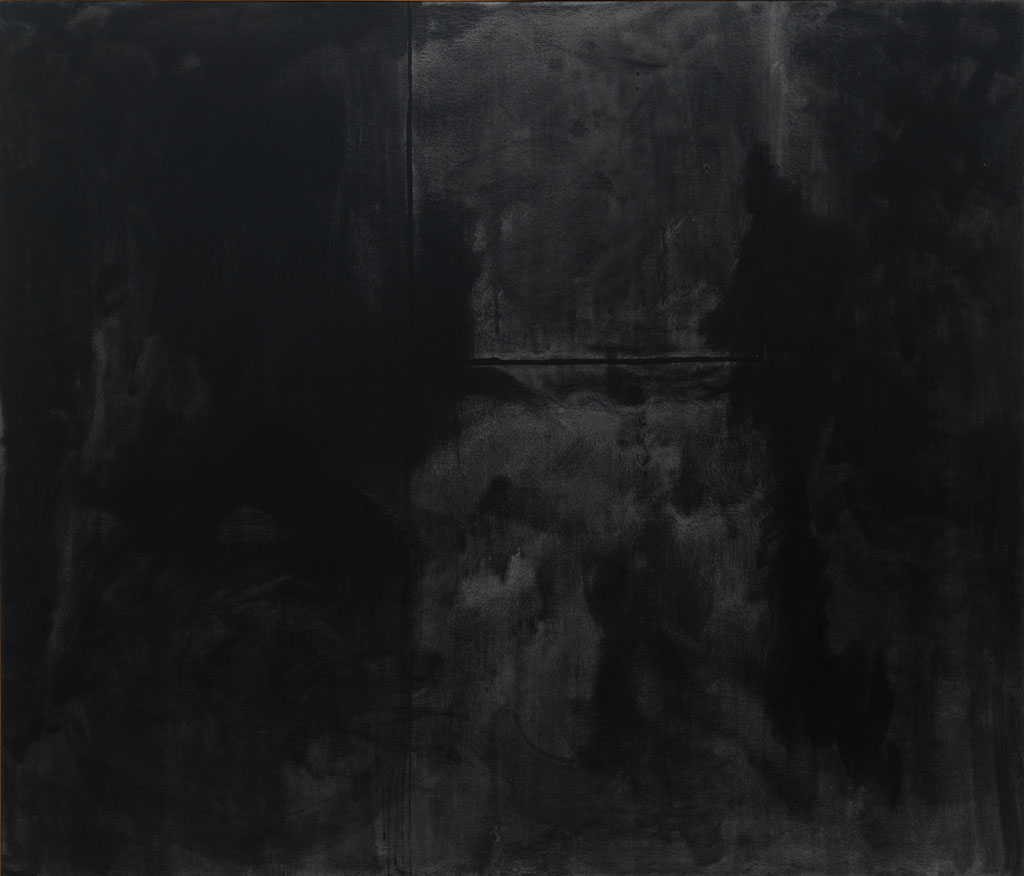Motherwell, Robert
In Plato’s Cave (In Platons Höhle), 1973
Acryl auf Leinwand
182,9 × 213,4 x 3 cm
Gemischte Schenkung 2010

In dem Dunkel des annähernd monochromen Schwarzgrau zeugen die Spuren des Pinsels und der unterschiedlich starke – von dünn lasierend bis nahezu deckend – Auftrag der Malmittel von einem gestischen Malprozess. Im starken Kontrast dazu steht das mit präzisem Strich umrissene Quadrat, wie ein Fenster in einem dunklen, höhlenartigen Bildraum. In der Serie „Open“, der In Plato’s Cave zuzurechnen ist, reflektierte Motherwell von 1967 an die Bedeutung des Fenstermotivs in der Geschichte der Malerei. Mit dem Titel verweist er zudem auf Platons Höhlengleichnis. Der griechische Philosoph beschreibt darin das Szenario von Menschen, die, in einer Höhle angekettet, nichts anderes sehen können als nur die Schatten der Dinge, die hinter ihnen geschehen. Diese nehmen sie als die einzige, ihnen bekannte Realität wahr. Der Erwerb 2010 wurde den Freunden durch die weitgehende Schenkung eines Kölner Sammlers ermöglicht.
